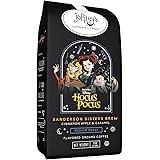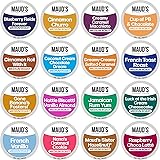Unlock Superior Flavor: Essential Tips for Better Drip Coffee at Home
There is a familiar scenario many of us have experienced: company is coming over, or perhaps it’s just another Monday morning, and the thought of brewing a pot of coffee that tastes anything less than delightful can be disheartening. Often, the trusty drip coffee maker is viewed as the “arch nemesis” by coffee enthusiasts, yet for countless homes, it is the go-to device for brewing. As demonstrated in the insightful video above, achieving a truly enjoyable cup of drip coffee does not require abandoning this convenient appliance; rather, it demands a few strategic adjustments that can dramatically elevate the experience.
For those who simply want a good, honest cup of coffee without diving deep into complex brewing methods, or for hosts preparing a large batch for several guests, these simple yet impactful tips are invaluable. No longer must one settle for coffee that tastes as though it was scooped from a two-pound can without care. Instead, a path to significantly improved coffee quality is readily available, primarily through minor changes in preparation and equipment.
The Foundation of Flavor: Embrace Whole Bean Coffee
One of the most transformative steps that can be taken to improve drip coffee quality begins long before the water ever touches the grounds. The journey to a brighter, more complex cup starts with whole bean coffee. It might seem like an extra step, yet the difference is profound. The reason for this superiority is rooted in chemistry and preservation; the delicate gases and aromatic compounds that define coffee’s rich flavor profile are carefully protected within the whole bean.
When coffee beans are ground, this protective barrier is broken, allowing those volatile aromatics to escape rapidly. It is widely acknowledged by experts that within a mere 15 minutes of grinding, approximately 50% of these crucial aromatic compounds can be lost. Consider the vibrant aroma of freshly baked bread compared to one that has been sitting for hours; a similar principle applies to coffee. Without these aromatics, much of the nuanced flavor is simply absent. Therefore, by grinding coffee fresh just before brewing, a maximum amount of brightness, complexity, and overall flavor is preserved and transferred directly to your cup. This principle holds true for virtually any whole bean coffee, not just expensive artisan varieties, making it an accessible upgrade for everyone.
The Grinder’s Crucial Role: Burr vs. Blade
If whole bean coffee is the foundation, then a quality grinder is the cornerstone. However, not all grinders are created equal, and this distinction is pivotal. A blade grinder, often found at lower price points, operates much like a blender, chopping the beans with a spinning blade. This method results in an inconsistent grind, producing a mix of fine powder and larger chunks. When the grind size is irregular, an uneven extraction occurs; the fine particles are over-extracted, leading to bitterness, while the coarser particles are under-extracted, resulting in a weak, sour taste. It’s like trying to cook a meal where some ingredients are burnt and others are raw – the final result is far from ideal.
Conversely, a burr grinder works by crushing the beans between two abrasive surfaces, allowing for a remarkably consistent and uniform grind size. This consistency is paramount for optimal extraction, as it ensures that water flows evenly through all the coffee particles, dissolving flavors at a similar rate. While burr grinders were once considered a significant investment, modern options have become much more accessible. A decent burr grinder, capable of producing excellent results for drip coffee, can often be acquired for around $60. This investment, while possibly costing more than some basic drip coffee makers, is arguably more critical to the final taste. Furthermore, a burr grinder offers versatility; different brew methods like French press, AeroPress, or pour-over each require specific grind sizes, so this tool becomes a valuable asset if further coffee exploration is ever desired.
Beyond the Basics: Water Quality and Filtration Choices
While often overlooked, the quality of water used in brewing plays a significant, albeit passive, role in the taste of your drip coffee. Tap water, especially in areas with hard water, can contain minerals and impurities that not only negatively impact flavor but also lead to mineral deposits accumulating within your coffee maker. These deposits can eventually clog and damage the machine, shortening its lifespan. Therefore, using fresh, filtered, cold water is a simple yet effective way to ensure a cleaner, more consistent taste and prolong your appliance’s life.
Once water quality is addressed, attention can be turned to the filter itself. Many home brewers automatically reach for paper filters, unaware that this choice might be holding back potential flavor. Paper filters, while convenient, are known to absorb many of the natural oils present in coffee grounds. These oils are packed with flavor compounds and contribute significantly to the coffee’s body, richness, and complexity. It’s akin to straining a hearty soup through a fine cloth, inadvertently removing some of its most robust elements.
A permanent mesh filter offers a compelling alternative. This small upgrade, typically a general standard size fitting most drip makers, allows those precious coffee oils to pass through into your cup, resulting in a noticeably richer and more complex brew. Moreover, mesh filters are highly reusable, often for hundreds of uses, making them an environmentally friendly choice that can save money over time by eliminating the need for disposable paper filters. This simple switch represents a substantial improvement for minimal cost and effort.
The Stirring Secret: Optimal Saturation for Maximum Extraction
Even with fresh beans, a consistent grind, and the right filter, one crucial step is often missed, especially in many standard drip coffee makers. Observation reveals that water often dribbles into the center of the coffee grounds, leading to uneven saturation. This means some grounds are over-extracted, some are under-extracted, and some might not be fully engaged at all. Achieving full saturation is paramount for maximizing flavor extraction and ensuring that all those carefully preserved aromatics and oils make their way into your cup.
The final, perhaps most surprising, tip involves a simple stir. After the drip maker has begun its cycle and roughly half of the water has been dispensed into the grounds (e.g., if brewing eight cups, wait until the water level reaches four), carefully open the lid. Using a soft, non-abrasive stick, such as a bamboo chopstick, gently stir the coffee grounds. This quick, few-second agitation ensures that all the grounds are thoroughly saturated with the hot water, creating an even slurry. This frothy, fully saturated bed of coffee is then allowed to continue brewing, leading to a much more complete and efficient extraction of flavors. This technique, though requiring a moment of interaction, significantly enhances the final product, allowing the rich potential of your freshly ground, oil-rich coffee to be fully realized.
Considering the Gram Scale: A Step Towards Precision
For those interested in delving deeper into the science of drip coffee, a gram scale is an invaluable, though not essential, tool. It might seem excessive, but coffee beans vary in density and weight depending on their origin and processing. Relying solely on scoops can lead to inconsistent coffee-to-water ratios, which directly impacts flavor. By weighing your coffee beans, an accurate and repeatable ratio is ensured, providing another layer of control over the brewing process and allowing for even greater consistency and fine-tuning of your ideal cup.
By implementing these straightforward yet powerful tips—starting with whole beans and a burr grinder, optimizing water and filtration, and employing the simple stirring technique—a truly better cup of drip coffee is well within reach. It demonstrates that superior coffee does not always require elaborate setups, but rather a thoughtful approach to the basics. These methods are designed to transform your everyday brew from merely acceptable to genuinely exceptional, all while utilizing the familiar convenience of your existing drip coffee maker.







